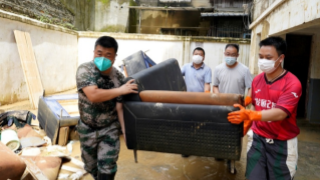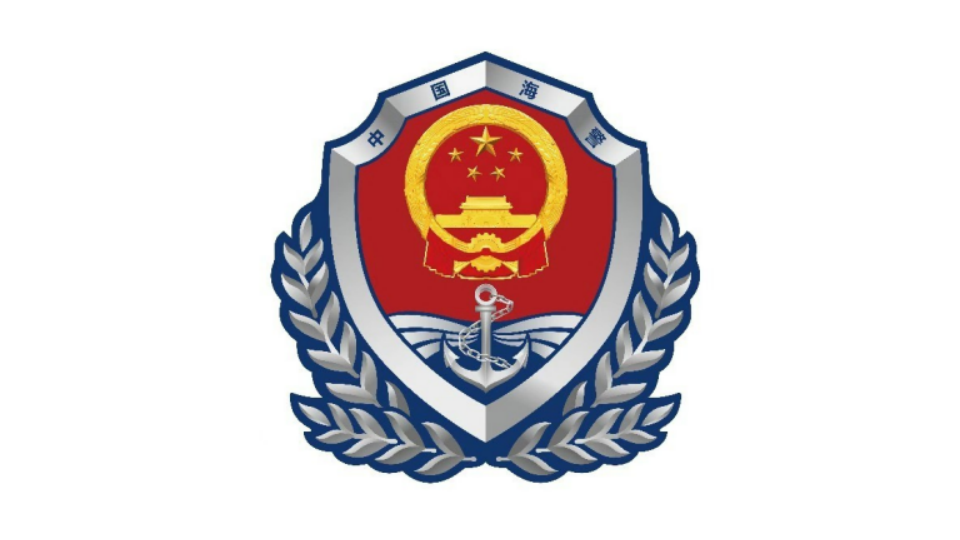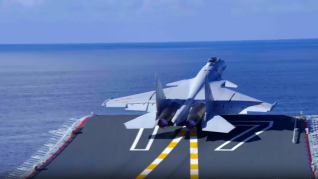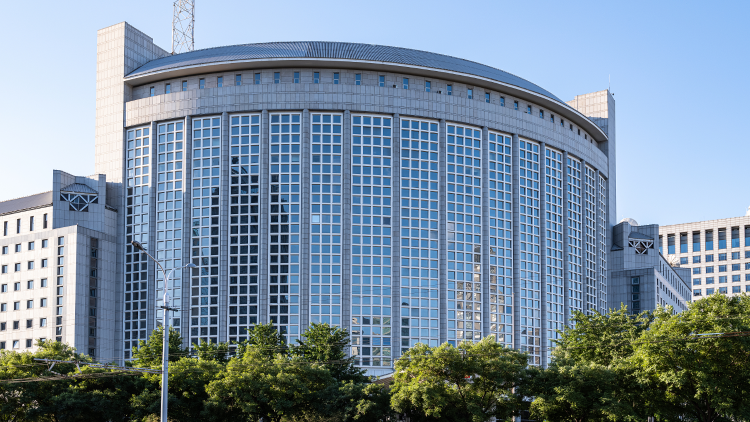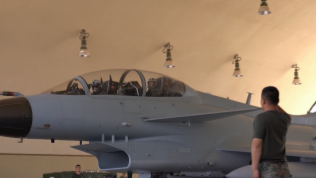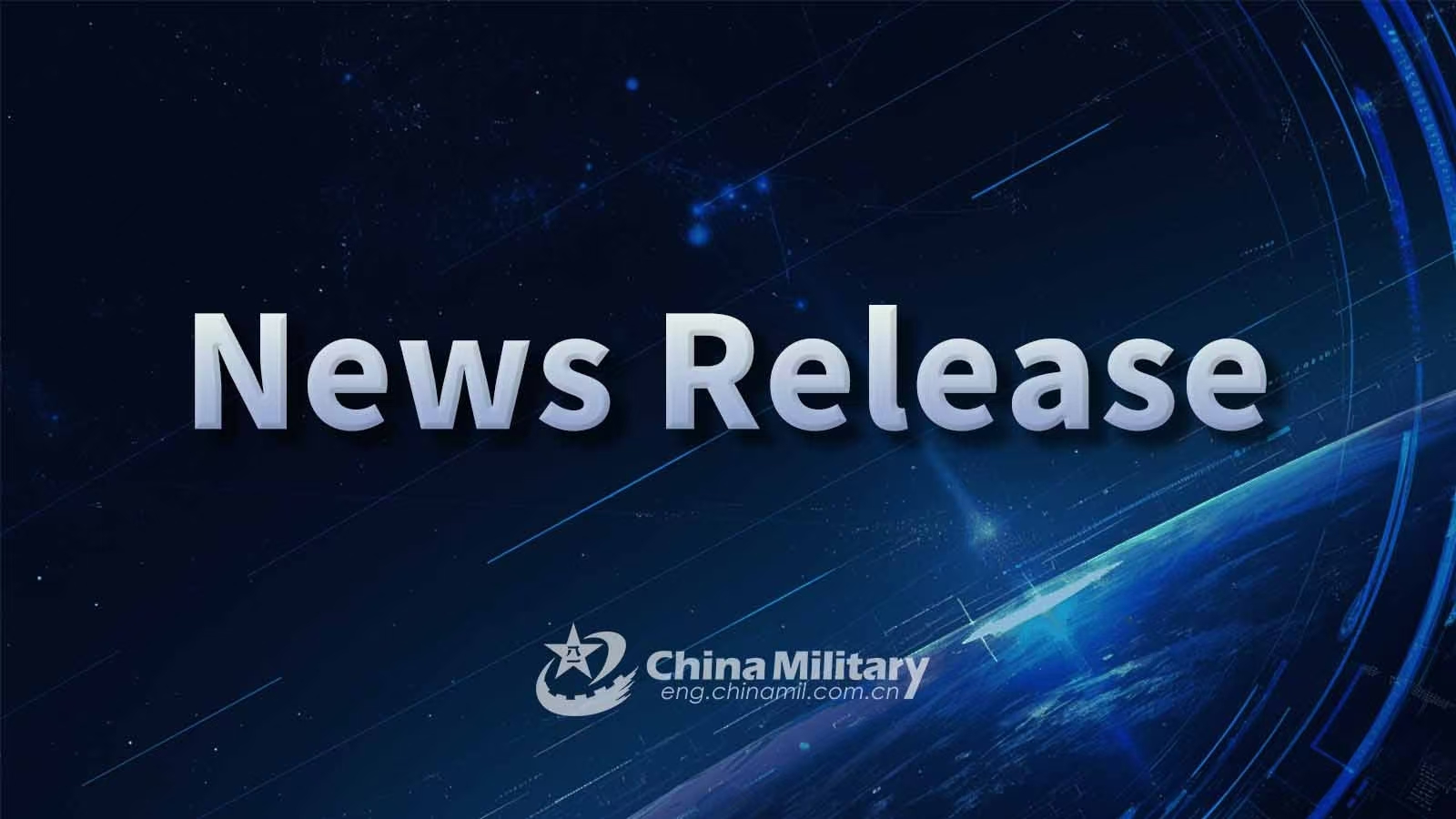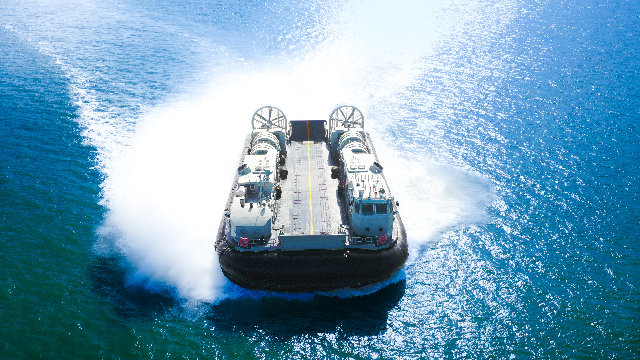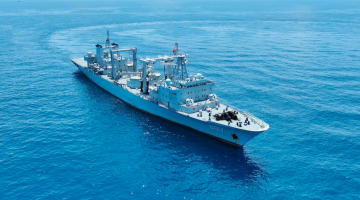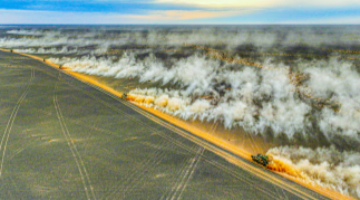陈航辉 张成堡
By Chen Hanghui, Zhang Chengbao
“护身军刀”演习始于2005年,每两年在澳大利亚举行一次,由美澳轮流担任主办方,最初是双边演习,2015年开始邀请其他国家参加。据外媒报道,“护身军刀2023”有约3万名官兵、20多艘舰船参演,是迄今为止美澳两军举行的“规模最大、复杂度最高”的一次演习。与以往相比,今年的演习具有三个特点。
The Talisman Sabre exercise, initiated in 2005, is held by the US and Australia alternately and biennially in Australia. Starting as a bilateral exercise, it began to invite other countries in 2015. The Talisman Sabre 2023 involves about 30,000 servicemembers and more than 20 vessels, being the largest and most complicated exercise ever held by American and Australian forces, foreign media reported. This year’s exercise has three characteristics compared to previous years.
规模扩大。之前的演习,通常在澳大利亚昆士兰州实施,今年不仅在昆士兰州开设17个训练点,还在新南威尔士州和西澳大利亚州各开设1个训练点,在北领地开设2个空军训练点,在诺福克岛周边海域开展演练,演习区域几乎覆盖澳大利亚全境,指挥所与实兵的最大距离超过2500公里。此外,英国、法国、日本、德国等11国派兵参演,参演国数量比上次演习大幅增加。
Larger scale. Previously the exercise was usually held in Queensland, Australia. This year, in addition to the 17 training stations in Queensland, it also had one in New South Wales, one in Western Australia, and two air force training stations in Northern Territory. The exercise, taking place in waters around Norfolk Island, covered almost the entire Australia, with the longest distance between the command and the troops being 2,500 km. Moreover, with the participation of 11 countries including the UK, France, Japan and Germany, the number of participating countries also increased sharply compared to the last exercise.
对抗性增强。此次演习历时15天,实兵演习则持续长达10天。与往年相比,今年的实兵演习不仅规模大,而且采取背靠背对抗形式,对抗性明显增强。据美国媒体报道,此次演习的特别之处是假想敌的能力配置,以美军为首的多国联军,面对的是拥有陆、海、空、天、电、网全维作战能力的“高端”对手。
More intense confrontation. The exercise lasted 15 days, including 10 days of live-fire activities. Compared with previous years, it not only larger in scale, but also take the back-to-back confrontation, which is significantly more confrontational. American media reported that what’s special about the latest exercise is the high-caliber capabilities of the imaginary enemy – the joint forces of multiple nations led by the US face up against a high-end rival equipped with full-spectrum combat capabilities covering the land, sea, air, space, electronics, and cyberspace.
突出联合后勤演练。今年的演习将大规模后勤行动作为重要课目,美军在澳大利亚布里斯班、汤斯维尔和达尔文市开设了三级后勤指挥所,演练了联合后勤上岸行动,试图检验美澳联军跨洋输送、海上卸载和人员装备接收能力。据澳大利亚媒体称,这是二战后美澳联军在澳境内组织的最重大的后勤演习。
Greater emphasis on joint logistics support. Large-scale logistics operation is a key subject this year. The US forces set up three logistics commands in Brisbane, Townsville and Darwin at different levels, and a joint logistics landing operation was carried out to test the US-Australian joint forces’ capability of ocean-crossing transportation, on-the-sea unloading, and personnel and equipment takeover. Australian media called it the most significant logistics drill by the joint forces in Australia after WWII.
演习期间,美国海军部长、国防部长先后视察了参演部队,美澳双方还举行了防长和外长“2+2”会议。高调的背后,是美国企图借演习达成多重战略目的。
During the exercise, the US Secretary of the Navy and Secretary of Defense inspected the exercising troops in succession, and the bilateral “two plus two” meeting between their defense and foreign ministers was also held. Behind such a high-profile exercise is America’s intention to achieve multiple strategic purposes.
首先,捆绑南太盟友伙伴,巩固美国在南太的势力范围。演习中,美国极力渲染“共同威胁”,制造对抗氛围,不断重复其对南太国家的安全承诺,凸显美国的“安全保护伞”作用。此外,美防长奥斯汀借军演之机访问了巴布亚新几内亚和澳大利亚,主动加强与南太国家的军方高层互动,企图以安全议题撬动国家间关系,将南太国家拉入美国的战略轨道,服务于美国的印太战略。
First, it wants to tie the South Pacific allies and partners onto its chariot to consolidate America’s clout in the region. During the exercise, the US side went to great lengths to play up the so-called common threats and create a confrontational atmosphere, and kept repeating its security commitment to South Pacific countries in order to highlight its role as the protective umbrella.Taking the opportunity of the exercise, US Defense Secretary Austin visited Papua New Guinea and Australia, taking the initiative to strengthen the engagement with senior military officials of those countries in an attempt to leverage inter-state relations on security and drag them onto America’s strategic orbit to serve its Indo-Pacific strategy.
其次,整合印太联盟体系,谋求强化美国在印太的领导地位。此次演习,除了13个参演国外,还有印度、菲律宾、新加坡、泰国4个观察员国观摩演习。这17个国家,涵盖了日、澳、韩等5个美国签约盟友,囊括“奥库斯”“四方安全对话机制”“五眼联盟”等美国在印太地区几乎所有重要联盟机制的成员国,“以演促盟”的意图十分明显。美国还鼓动法、德两个欧洲大国派兵参演,反映了其持续推进“北约亚太化”的用心。种种迹象表明,美国企图构建以美国为中心的“嵌套式”印太联盟体系。还有,意图通过演训提升美盟协同作战能力。此次演习,美澳联军与其他参演国军队一道,演练了复杂地域作战、高强度空战等“高端战争”课目,同时,美军还通过演习明确作战支援和保障需求,推进预设战场建设。演习尚未结束,美军就宣布要在澳境内开设一个后勤分发中心,升级有关地域的关键机场,并增派海上巡逻和侦察机,以满足未来作战需求。
Second, it wants to integrate the alliances in the Indo-Pacific and cement its regional leadership. In addition to the 13 participating countries, this year’s Talisman Sabre also invited India, the Philippines, Singapore and Thailand as four observer states. The 17 countries include five American allies, such as Japan, Australia and ROK, and almost all members of America’s key alliances in the Indo-Pacific region, such as AUKUS, Quad and the Five Eyes. America’s intention of “exercise for alliance” cannot be more obvious. It also urged France and Germany to send troops to participate in the continued effort to stretch NATO’s antenna to the Asia Pacific. All these are full proof that the US wants to create a nested Indo-Pacific alliance system centered on itself. Moreover, it hopes to enhance combat interoperability with its allies. During the exercise, the US-Australian joint forces, in collaboration with forces from other countries, carried out high-end warfare subjects such as combat in complex terrain and high-intensity air battle. American troops also specified the combat support and logistics needs and advanced battlefield projection. Before the exercise even concluded, the US side announced its plan to set up a logistics distribution center in Australia, upgrade key airports in relevant areas, and assign more maritime patrol and reconnaissance aircraft to meet future combat needs.
对于此次演习,美国表面宣称是与盟友合作,共同捍卫“安全和民主价值观”,但其真实意图是拉拢、胁迫盟伴配合其与中国的地缘政治对抗,扩大在南太地区的影响力。
Washington claimed that the exercise was aimed to strengthen the cooperation with allies and jointly defend security and democracy, but its true motive was to rope in or coerce its allies and partners into assisting in its geopolitical confrontation with China and to expand its influence in the South Pacific.
然而,由于历史和现实原因,南太国家基础设施落后、经济增长乏力,气候变化、自然灾害等生存性威胁日益凸显,期盼的是大国提供帮助、共迎挑战。但美国却自顾从大国竞争的视角发展与南太国家的关系,以传统安全思维对接南太国家的发展需求,继往出台的倡议口惠而实不至,并且充斥着对抗性和排他性,无法真正解决南太国家面临的问题。
Due to historical and realistic reasons, South Pacific countries are plagued by backward infrastructure, slugging economic growth, and mounting existential threats from climate change and natural disasters. What they truly want is for major countries to help and aid them and jointly tackle their challenges. Yet America, turning a blind eye to their immediate needs and concerns, just goes ahead and develops relations with them from the perspective of major-country competition. It answers their developmental demand with traditional security thinking, and the initiatives it has put forth are mere lip service that cannot solve the countries’ problems because they are confrontational and exclusive.
美国的地缘政治游戏既不符合时代潮流,也不受南太国家欢迎。美国应尊重和顺应地区国家求和平、谋发展、促合作的共同愿望,停止举行挑衅性、对抗性军事演习,以和平发展思维取代竞争对抗思维,用行动维护地区和平稳定。
America’s geopolitical game doesn’t conform to the trend of the times, nor is it welcomed by South Pacific countries. Washington should respect and cater to regional countries’ common wish for peace, development and cooperation, and stop its provocative and confrontational military exercises. It should instead replace its competitive, confrontational mindset with one embracing peace and development, and take solid steps to preserve regional peace and stability.

